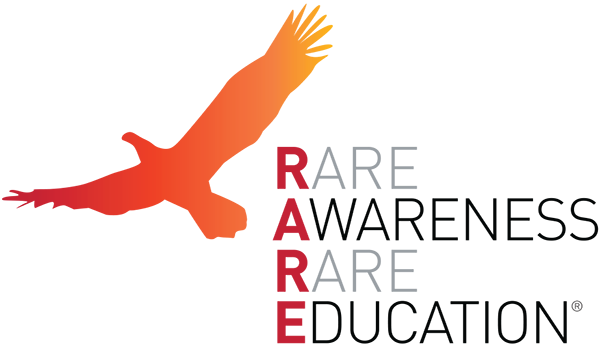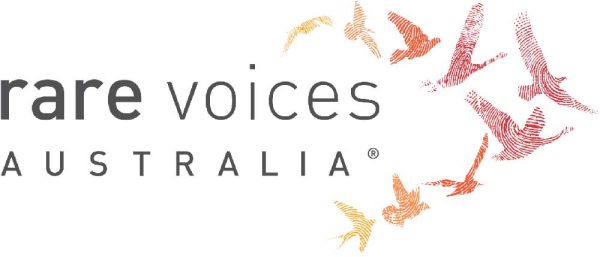Danon disease
Quick Search
- Summary
- Synonyms and Classifications
- Symptoms
- Disability Impacts
- Cause and Inheritance
- Diagnosis
- Treatment
- Clinical Care Team
- Clinical Care Guidelines
- Emergency Management
- Research
- Rare Disease Organisation(s)
- Lived Experience
- Support Services and Resources
- Mental Health
- Other Information
- Useful Links for Healthcare Professionals
Summary
Danon disease is a genetic condition caused by a defect in the wall (membrane) of lysosomes.1 Lysosomes are small structures within a cell, also known as vesicles or organelles, which are involved in recycling the cell’s waste products. When lysosomes are not working properly, this leads to a build-up (accumulation) of waste products, causing damage to the cell.
Danon disease is characterised by cardiomyopathy (disease of the heart muscle), weakness in the muscles used for movement (skeletal muscle myopathy), and intellectual disability, particularly in males.2,3 There may also be other symptoms associated with Danon disease can affect multiple organ systems in the body (multi-system disorder).4 Females can also be affected, but the symptoms are often less severe and usually develop in adulthood, whilst males are affected from a younger age.2,4 The symptoms are typically not present at birth.5
Synonyms and Classifications
Synonyms: Vacuolar cardiomyopathy and myopathy, X-linked pseudoglycogenosis II, Antopol disease; GSD due to LAMP-2 deficiency; Glycogenosis due to LAMP-2 deficiency; Lysosomal glycogen storage disease with normal acid maltase activity; GSD, type 2B; GSD, type IIb; Glycogen storage disease, type IIb; Glycogen storage disease, type 2B; Glycogen storage disease due to LAMP-2 deficiency.2,6,7
Note: Danon disease was originally described as a glycogen storage disease but later discovered to be due to a defect in lysosomal membrane. Some of the synonyms listed above for reference may now be considered outdated.4,6
Universal rare disease classifications provide a common language for recording, reporting and monitoring diseases. Please visit the Rare Disease Classifications page for more information about these internationally recognised classifications.
Symptoms
Symptoms of Danon disease vary between males and females and among individuals.5 Males are usually more severely affected and from a younger age, whilst females tend to develop symptoms during adulthood.2,4 Symptoms are not typically present at birth.5
Danon disease is characterised by heart muscle disease (cardiomyopathy), weakness in the muscles used for movement (skeletal muscle myopathy), and intellectual disability.2,3 There may be delayed development of motor skills mainly in males.4 There may also be damage to the retina of the eyes (retinopathy), affecting vision.
Signs of cardiomyopathy may include fatigue, shortness of breath and swelling due to build up of fluid in tissues (oedema/fluid retention.8 There may be thickening of the heart (hypertrophic cardiomyopathy) or enlargement of the heart (dilated cardiomyopathy), and in some cases a need for a heart transplant.4 Sudden heart (cardiac) failure can also occur in some individuals, more so in males than females.5,8
There may also be breathing (respiratory) and liver issues.4
Please speak to your medical team to learn more about the signs and symptoms/symptoms and complications/symptoms and health implications of Danon disease.
Disability Impacts
Rare diseases are often serious and progressive, exhibiting a high degree of symptom complexity, leading to significant disability. Majority of the estimated two million Australians living with a rare disease meet the Australian Government’s definition for disability (in accordance to the Australian Public Service Commission and Australian Bureau of Statistics), and many experience severe and permanent disability impacts. If you or someone you care for is experiencing disability-related impacts from a rare condition, please speak with a health or disability professional for advice. Information about relevant disability support can be found at the RARE Portal’s Disability Support Information page.
Cause and Inheritance
Danon disease is a genetic condition. It is caused by disease-causing genetic changes (variants) in the lysosome-associated membrane 2 (LAMP2) gene on the X chromosome (X-linked condition).6
Both males and females can be affected, but males are often more severely affected and develop symptoms at a younger age (earlier on-set).2 As males only have one X chromosome, they have one copy of the LAMP2 gene, so if their LAMP2 gene has the disease-causing genetic variant, they will have Danon disease. Females have two X chromosomes and two copies of LAMP2 gene – if at least one of their copies has the disease-causing genetic variant, they may be affected, with symptoms typically developing in adulthood.4
These genetic variants can be inherited (passed on to the next generation).5 More information on X-linked inheritance pattern can be found at Centre for Genetics Education: X-linked inheritance.
If you would like to learn more about the inheritance and impact of this condition, please ask your doctor for a referral to a genetic counsellor. Genetic counsellors are qualified allied health professionals who can provide information and support regarding genetic conditions and testing. More information about genetic counselling can be found at:
- Information on Genetic Services
- The National and State Services pages underneath the ‘Genetic Counselling’ sections listed
Diagnosis
There are currently no formal clinical diagnostic criteria for Danon disease.4
A diagnosis of Danon disease may be considered based on presence of characteristic symptoms and family history, and confirmed by genetic testing.3
Muscle biopsies may also be performed.3,5
A differential diagnosis can rule out other conditions that have similar symptoms, such as X-linked myopathy with excessive autophagia (XMEA), Pompe disease, glycogen storage disease type 2, sarcomeric hypertrophic cardiomyopathy (HCM), familial Wolff-Parkinson White syndrome/PRKAG2 syndrome, Friedreich ataxia, Fabry disease, mitochondrial diseases, and rasopathies.3,6,7
Please speak to your medical team to learn more about the available diagnostic pathways for Danon disease.
Treatment
There is no curative treatment for Danon disease.3,7 Treatment is targeted at managing symptoms (symptomatic management) and involves a multidisciplinary care team.3 This may include monitoring and treatment of heart issues, physiotherapy and occupational therapy to help improve muscle strength and flexibility, speech and educational therapy, and management of visual issues.3-5,7,8
A heart transplant may be required for individuals with end-stage cardiomyopathy.3
Please speak to your medical team to learn more about the possible treatment or management options for your condition. Treatment will depend on an individual’s specific condition and symptoms. It is also important to stay connected to your medical team so that you can be made aware of any upcoming clinical trial opportunities.
Clinical Care Team
Clinical care for rare diseases often involves a multidisciplinary team of medical, care and support professionals. Please note that the information provided here is as a guide and that RVA does not necessarily monitor or endorse specific clinics or health experts.
Healthcare professionals involved in the treatment of acromegaly may include general practitioners (GP), geneticists, cardiologists, neurologists, ophthalmologists, hepatologists, respiratory physicians, physiotherapists, occupational therapists and speech therapists.2,4 The need for different healthcare professionals may change over a person’s lifetime and extend beyond those listed here.
Clinical Care Guidelines
We are not aware of any clinical care guidelines for Danon disease in Australia. If you know of any relevant care guidelines, please let us know via the Contribute page.
The following guidance is available from international experts outside Australia; however, there may be information that is not relevant or applicable to the Australian context, and may not be up to date:
Emergency Management
Individuals living with rare diseases may have complex medical issues and disabilities, which are not always visible. It is often useful to refer to their medical history as well as personal information such as a medical card, doctor’s letter, or if available, a rare disease passport, for relevant information.
It may be important to consider the following when managing individuals living with Danon disease at emergency departments/services:
- Individuals with Danon disease may have severe cardiomyopathy and may be at risk of heart failure7
Research
There are specific considerations around participating in rare disease research, including clinical trials. It is important to be mindful of issues such as data privacy, research ethics, consent and differences in research regulations between Australia and other countries.
If you are interested in finding clinical trials for your condition, please visit the following websites; however, there may not be any clinical trials available:
It is best to discuss your interest in any clinical trials with your medical team to determine suitability and eligibility.
Please note that RVA does not necessarily monitor or endorse each group/organisation’s operational governance and activities.
Rare Disease Organisation(s)
International Organisation:
Danon Foundation (United States)
Website: https://www.danonfoundation.org/
Please note that RVA does not monitor or endorse each group/organisation’s operational governance and activities. When engaging with a group, please consider the information on the RARE Portal’s Finding Helpful Peer and Community Supports page.
Lived Experience
Danon disease varies between individuals, and each person’s experience is unique.
If you would like to share your personal story with RVA, please visit the Rare Voices Australia: Share Your Story page. RVA will consider your story for publishing on our website and inclusion on the RARE Portal.
Support Services and Resources
For information on available government and social services that provide support for individuals with a rare disease, please visit the National and State Services pages.
Mental Health
People living with a rare disease, including families and carers, often face unique challenges such as diagnostic delays, misdiagnoses, limited treatment options, and limited access to rare disease specialists and support. These challenges may impact people’s emotional wellbeing and quality of life. Many people find it helpful to seek mental health and wellbeing support to cope with ongoing stress and uncertainty. Connecting with people who have shared experiences through a support group may also be helpful. Information about relevant mental health and wellbeing support can be found at:
- Mental Health and Wellbeing Support for Australians Living with a Rare Disease
- The National and State Services pages underneath the ‘Mental Health’ sections listed
Other Information
Further information on Danon disease can be found at:
Useful Links for Healthcare Professionals
References
- Nishino I, Fu J, et al. Primary LAMP-2 deficiency causes X-linked vacuolar cardiomyopathy and myopathy (Danon disease). Nature 2000; 406, 906–910. https://doi.org/10.1038/35022604
- Genetic and Rare Diseases (GARD) Information Center. Danon disease. Accessed 13 May 2025. https://rarediseases.info.nih.gov/diseases/9730/danon-disease
- Hong KN, Eshraghian EA, et al. International consensus on differential diagnosis and management of patients with Danon disease: JACC state-of-the-art review. J. Am. Coll. Cardiol. 2023; 82(16):1628-1647. https://doi.org/10.1016/j.jacc.2023.08.014
- Taylor MRG, Alder ED. Danon disease. 2020. Updated 23 May 2024. In: Adam MP, Mirzaa GM, Pagon RA, et al. GeneReviews® [Internet]. Seattle (WA): University of Washington Seattle. 1993-. Accessed 13 May 2025. https://www.ncbi.nlm.nih.gov/books/NBK554742/
- National Organization for Rare Disorders (NORD). Danon disease. Updated 9 February 2023. Accessed 13 May 2025. https://rarediseases.org/rare-diseases/danon-disease/
- Online Mendelian Inheritance in Man (OMIM). #300257 Danon disease. Updated 31 March 2025. Accessed 13 May 2025. https://www.omim.org/entry/300257
- Danon disease. Updated January 2024. Accessed 13 May 2025. https://www.orpha.net/en/disease/detail/34587
- D’Souza RS, Law L. Danon disease. Updated 24 July 2023. In: StatPearls [internet]. Treasure Island (FL): StatPearls Publishing. Accessed 13 May 2025. https://www.ncbi.nlm.nih.gov/books/NBK545211/
Contributors
This page has been developed by Rare Voices Australia (RVA)’s RARE Portal team.
If you are aware of any additional information that may benefit stakeholders with an interest in this page, or if you notice any broken links or inaccurate information, please let us know via the Contribute page.

